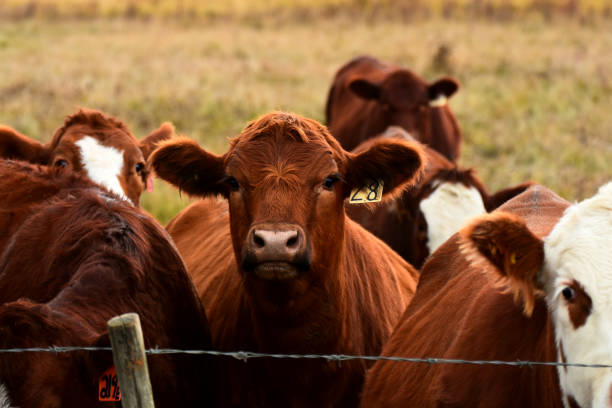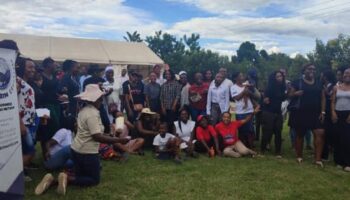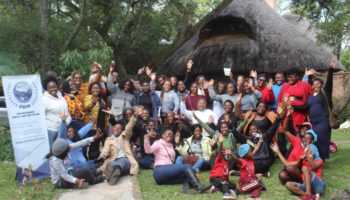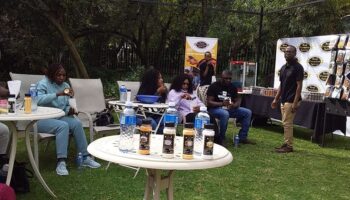Some 9 years ago, in 2014 – I was looking for land to do layers. My idea was large numbers of small stocks, consistent supply of product, a sustainable agricultural business morel. I had done thorough research, raised USD 5000 in capital and I was ready to start – I just didn’t have land close enough to my workplace.
In come this former college mate of mine, returning from SA and ready to take the market for cattle breeding. The man had worked for the Brahman Breeders Association here in SA and was knowledgeable of the record keeping, cattle calendar, breeding processes, inspections, disease control and marketing of cattle.
Preparation
He gathered 10 of us, friends from college and former workmates. Each was to put in $5000, to make it 50k. He had a small 15ha farm that his father had apportioned him from the family land and had deemed it good enough for a start. We all agreed and 10 of us signed the papers. We had 6 months to raise the said amount.
Problem 1: Of the 10 of us, at the end of 6 months only 2 had paid the required 5k – me and the guy who brought the idea. Another guy had paid $2k, two formally resigned from the initiative citing their doubts. The rest went AWOL.
Solution: During the 6 months the two of us did as much research as we could about cattle in Zim. We travelled to Matebeleland to see cattle ranges, we knocked doors on offices in the ministry and different breeders associations, we visited successful cattle breeders such as Mark Hook and Forrester, and also some up and coming black cattle breeders in the country, we attended auctions to understand the pricing and process. We improved our business plan, the business model, adjusted the budget accordingly. We tried recruiting others, and many shunned the idea, citing that the 5 year to profit was too long.
Finally, one guy was emigrating to Europe decided to throw a USD7k in – and we raised our capital to USD25k – now from 4 people.
Launch
We bought our first registered Boran Bull from Forrester for USD5500. Then started buying cows and heifers cattle from the community. We built a kraal of pole and fence – 1ha in size. We had a total of 22 females when we officially started. We continued and consistently bought heifers from the hood, at least two each every month for the three of us, one guy lagged behind as he was not sold on the idea entirely.
Operationalisation
As our numbers grew we needed labour and closer monitoring – we hired two guys from the community. Gave the accommodation, a salary and food. Our staff compliment is now standing at 10, including a Operations Manager and a resident Vet Technician who monitors and ensures animal health, keeps records and manages the calendar.
Problem 2 – Teaks and disease from cattle in the community. Rural folks dont manage their cattle as well as we wanted. So when cattle mixed ours would pick up teaks and disease. Our bulls we were accidentally servicing other peoples cows and got STDs (yes they are there in cattle too)
Solution – Isolation – we fenced off our pastures, built our own spray race (to avoid the public diptank), we quarantined the sick and new animals
Problem 3 – Small land means less food – we had to start buying supplementary feeds, especially for the dry season. We needed protein and mineral supplements, plus the starches.
Solution – Growing our own maize for starch. Its working so far but as numbers increase and as the business pivots, it may become unsustainable
Problem 4 – Bulls fighting – yes, that $5k bull starts fighting others. They need to establish hierarchy and who mates first.
Problem 5 – Uncontrolled breeding – yup, calves dropping unexpectedly are a problem, the mothers needs specialised care, you dont know who the father of the child is, and you cant know the performance of the bulls.
Solution to problem 4&5 – Keep the bulls away, and put them in twice a year for a period of two months each. It reduced the cost of managing the maternity ward (we know when we need to have our Vet doctor close), synchronised weaning and ended the bull fighting as each bull would go to a separate paddock of 40-50 females for 2 months., Afterwards, the bulls come back to their kraal. They never fight when there are no women to fight for – apparently. This also helped us to have “same age steers” which can be taken to auction together. Controlled breeding was a game changer for us.
*Commercialisation*
The 4 of us – shareholders – have strategic roles in the journey of our business. We have a
– Research & Development person who researches constantly on possible operational improvements, improving the business model and carrying capacity
– Finance Person – budgeting for strategic expansions and business growth, prioritising on ideas and options
– Community Relations – engagement with community and other key stakeholders
– Operations and Logistics – sourcing materials that we need and managing inventory
We have bought a number of farm implements to make our business efficient – cattle handling tools, borehole and a trucks. We are seeking a baler and a tractor for this year. We also have a motorbike for our operations manager and vet, to improve their mobility and availability.
Our herds are managed in 4 permanent groups
1. Bulls
2. Active Cows
3. Weaners
4. Bulling heifers
and temporary groups
1. maternity group
2. steers going to the market
3. new arrivals
4. hospital
Our numbers are closer to 400 now, with 8 active bulls.
*Pivot*
In 2020 we were operationally certified as Boran Stud Breeders, after a long gruelling journey of improving operations and transparency in record keeping. We are therefore focusing more on quality than quantity. This is the elite cattlemen’s club.
We are also moving into pen fattening, so we dont sell our steers for the cheap.
*Critical Success Factors*
1. Community – our community relations person was highly effective in engaging the community. We get maize and stover and extra pastures from community members, we give them milk everyday. They also help protect our cattle from thieves. Sometimes we do community auctions for people looking to buy oxen for draught power. We even have people who buy dead cows to feed their crocs, and some who bring broiler droppings to us for free.
2. Planning & execution – we always have a 5 year plan and a 2 year plan both being executed concurrently, we monitor and improve consistently
3. Staff – we live our team, we resource them and send them for training, we also pay them good salaries and benefits
4. Learning from the best – everything we did was not an innovation. We copied from other bigger market players
Who am I?
I am just another IT guy who hangs around people wiser than me, eager to learn and eager to teach for the betterment of the society I live in. Through all this, I have learnt deep lesson in personal finance, business, insurance, taxation and life in general.
I did not start the cattle business, I was fortunate to buy into the idea early. I have other businesses that we can talk about some other time.
Zvimwe zvacho zvinoda round table – but hamuuye kumisangano.
![]()





